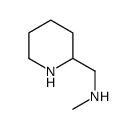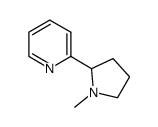21035-59-6
| 中文名 | 2-[(甲氨基)甲基]吡啶 |
|---|---|
| 英文名 | N-methyl-1-pyridin-2-ylmethanamine |
| 中文别名 |
N-甲基-1-吡啶-2-甲胺
N-甲基-2-吡啶甲胺 |
| 英文别名 |
N-methyl-(pyridin-2-yl)methylamine
methyl(pyridin-2-ylmethyl)amine 2-[(Methylamino)methyl]pyridine Methyl(2-pyridylmethyl)amine N-Methylpyridine-2-methanamine 2-(N-methyl-aminomethyl)pyridine N-Methyl-1-(pyridin-2-yl)methanamine N-(picolyl-2)-methylamine N-(pyridin-2-ylmethyl)-N-methylamine Pyridine,2-(methylaminomethyl) 2-[(methylamino)methyl]pyridine N-methyl-N-(2-pyridinylmethyl)amine 2-Pyridinemethanamine,N-methyl N-Methyl-N-(2-pyridylmethyl)amine |
| 密度 | 0.982g/cm3 |
|---|---|
| 沸点 | 178.9ºC at 760mmHg |
| 分子式 | C7H12Cl2N2 |
| 分子量 | 195.09000 |
| 闪点 | 62ºC |
| 精确质量 | 194.03800 |
| PSA | 24.92000 |
| LogP | 2.79590 |
| 蒸汽压 | 0.966mmHg at 25°C |
| 折射率 | 1.515 |
| 储存条件 | 室温,干燥 |
|
Section1. IDENTIFICATION OF THE SUBSTANCE/MIXTURE Product name: Methyl(2-pyridylmethyl)amine Section2. HAZARDS IDENTIFICATION Classification of the substance or mixture According to Regulation (EC) No1272/2008 Acute toxicity, Oral (Category 4) Skin irritation (Category 2)
Serious eye damage (Category 1) Specific target organ toxicity - single exposure (Category 3) According to European Directive 67/548/EEC as amended. Harmful if swallowed. Irritating to respiratory system and skin. Risk of serious damage to eyes. Label elements Pictogram Signal wordDanger Hazard statement(s) H302Harmful if swallowed. H315Causes skin irritation. H318Causes serious eye damage. H335May cause respiratory irritation. Precautionary statement(s) P261Avoid breathing dust/ fume/ gas/ mist/ vapours/ spray. P280Wear protective gloves/ eye protection/ face protection. P305 + P351 + P338IF IN EYES: Rinse cautiously with water for several minutes. Remove contact lenses, if present and easy to do. Continue rinsing. Hazard symbol(s) XnHarmful R-phrase(s) R22Harmful if swallowed. R37/38Irritating to respiratory system and skin. R41Risk of serious damage to eyes. S-phrase(s) S26In case of contact with eyes, rinse immediately with plenty of water and seek medical advice. Other hazards - none Section3. COMPOSITION/INFORMATION ON INGREDIENTS Formula: C7H10N2 Molecular Weight: 122,17 g/mol CAS-No.EC-No.Index-No.ClassificationConcentration Methyl(2-pyridylmethyl)amine 21035-59-6244-160-1-Acute Tox. 4; Skin Irrit. 2; Eye- Dam. 1; STOT SE 3; H302, H315, H318, H335 Xn, R22 - R37/38 - R41 For the full text of the H-Statements mentioned in this Section, see Section 16. Section4. FIRST AID MEASURES General advice Consult a physician. Show this safety data sheet to the doctor in attendance. If inhaled If breathed in, move person into fresh air. If not breathing, give artificial respiration. Consult a physician. In case of skin contact Wash off with soap and plenty of water. Consult a physician. In case of eye contact Rinse thoroughly with plenty of water for at least 15 minutes and consult a physician. If swallowed Do NOT induce vomiting. Never give anything by mouth to an unconscious person. Rinse mouth with water. Consult a physician. Section5. FIRE-FIGHTING MEASURES Suitable extinguishing media For small (incipient) fires, use media such as "alcohol" foam, dry chemical, or carbon dioxide. For large fires, apply water from as far as possible. Use very large quantities (flooding) of water applied as a mist or spray; solid streams of water may be ineffective. Cool all affected containers with flooding quantities of water. Special protective equipment for fire-fighters Wear self contained breathing apparatus for fire fighting if necessary. Further information Use water spray to cool unopened containers. Section6. ACCIDENTAL RELEASE MEASURES Personal precautions Use personal protective equipment. Avoid breathing vapors, mist or gas. Ensure adequate ventilation. Remove all sources of ignition. Evacuate personnel to safe areas. Beware of vapours accumulating to form explosive concentrations. Vapours can accumulate in low areas. Environmental precautions Prevent further leakage or spillage if safe to do so. Do not let product enter drains. Methods and materials for containment and cleaning up Contain spillage, and then collect with an electrically protected vacuum cleaner or by wet-brushing and place in container for disposal according to local regulations (see section 13). Keep in suitable, closed containers for disposal. Section7. HANDLING AND STORAGE Precautions for safe handling Avoid contact with skin and eyes. Avoid inhalation of vapour or mist. Keep away from sources of ignition - No smoking. Take measures to prevent the build up of electrostatic charge. Conditions for safe storage Keep container tightly closed in a dry and well-ventilated place. Containers which are opened must be carefully resealed and kept upright to prevent leakage. Store in cool place. Heat sensitive. Section8. EXPOSURE CONTROLS/PERSONAL PROTECTION Personal protective equipment Respiratory protection Where risk assessment shows air-purifying respirators are appropriate use a full-face respirator with multi-purpose combination (US) or type ABEK (EN 14387) respirator cartridges as a backup to engineering controls. If the respirator is the sole means of protection, use a full-face supplied air respirator. Use respirators and components tested and approved under appropriate government standards such as NIOSH (US) or CEN (EU). Hand protection Handle with gloves. Gloves must be inspected prior to use. Use proper glove removal technique (without touching glove's outer surface) to avoid skin contact with this product. Dispose of contaminated gloves after use in accordance with applicable laws and good laboratory practices. Wash and dry hands. The selected protective gloves have to satisfy the specifications of EU Directive 89/686/EEC and the standard EN 374 derived from it. Eye protection Tightly fitting safety goggles. Faceshield (8-inch minimum). Use equipment for eye protection tested and approved under appropriate government standards such as NIOSH (US) or EN 166(EU). Skin and body protection Complete suit protecting against chemicals, The type of protective equipment must be selected according to the concentration and amount of the dangerous substance at the specific workplace. Hygiene measures Handle in accordance with good industrial hygiene and safety practice. Wash hands before breaks and at the end of workday. Section9. PHYSICAL AND CHEMICAL PROPERTIES Appearance Formliquid Safety data pH no data available Melting pointno data available Boiling point79 °C at 13 hPa Flash point82,2 °C Ignition temperature no data available Lower explosion limit no data available Upper explosion limit no data available Density0,994 g/cm3 Water solubilityno data available Section10. STABILITY AND REACTIVITY Chemical stability Stable under recommended storage conditions. Conditions to avoid Heat, flames and sparks. Materials to avoid Strong oxidizing agents Hazardous decomposition products Hazardous decomposition products formed under fire conditions. - Carbon oxides, nitrogen oxides (NOx) Section11. TOXICOLOGICAL INFORMATION Acute toxicity no data available Skin corrosion/irritation no data available Serious eye damage/eye irritation no data available Respiratory or skin sensitization no data available Germ cell mutagenicity no data available Carcinogenicity IARC: No component of this product present at levels greater than or equal to 0.1% is identified as probable, possible or confirmed human carcinogen by IARC. Reproductive toxicity no data available Specific target organ toxicity - single exposure Inhalation - May cause respiratory irritation. Specific target organ toxicity - repeated exposure no data available Aspiration hazard no data available Potential health effects InhalationMay be harmful if inhaled. Causes respiratory tract irritation. IngestionHarmful if swallowed. SkinMay be harmful if absorbed through skin. Causes skin irritation. Eyes Causes eye burns. Signs and Symptoms of Exposure To the best of our knowledge, the chemical, physical, and toxicological properties have not been thoroughly investigated. Additional Information RTECS: Not available Section12. ECOLOGICAL INFORMATION Toxicity no data available Persistence and degradability no data available Bioaccumulative potential no data available Mobility in soil no data available PBT and vPvB assessment no data available Other adverse effects no data available Section13. DISPOSAL CONSIDERATIONS Product This combustible material may be burned in a chemical incinerator equipped with an afterburner and scrubber. Offer surplus and non-recyclable solutions to a licensed disposal company. Contact a licensed professional waste disposal service to dispose of this material. Contaminated packaging Dispose of as unused product. Section14. TRANSPORT INFORMATION ADR/RID Not dangerous goods IMDG Not dangerous goods IATA Not dangerous goods SECTION 15 - REGULATORY INFORMATION N/A SECTION 16 - ADDITIONAL INFORMATION N/A |
| 符号 |


GHS05, GHS07 |
|---|---|
| 信号词 | Danger |
| 危害声明 | H302-H315-H318-H335 |
| 警示性声明 | P261-P280-P305 + P351 + P338 |
| 危害码 (欧洲) | Xi |
| 风险声明 (欧洲) | 22-37/38-41 |
| 安全声明 (欧洲) | 26 |
| 海关编码 | 2933399090 |
| 上游产品 9 | |
|---|---|
| 下游产品 3 | |
| 海关编码 | 2933399090 |
|---|---|
| 中文概述 | 2933399090. 其他结构含非稠合吡啶环的化合物. 增值税率:17.0%. 退税率:13.0%. 监管条件:无. 最惠国关税:6.5%. 普通关税:20.0% |
| 申报要素 | 品名, 成分含量, 用途, 乌洛托品请注明外观, 6-己内酰胺请注明外观, 签约日期 |
| Summary | 2933399090. other compounds containing an unfused pyridine ring (whether or not hydrogenated) in the structure. VAT:17.0%. Tax rebate rate:13.0%. . MFN tariff:6.5%. General tariff:20.0% |




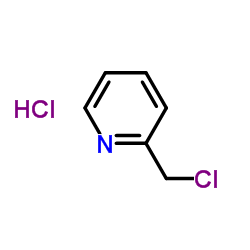
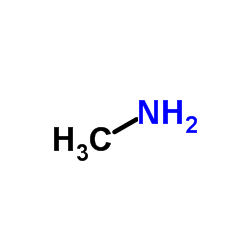
![2-[[N-(tert-butyloxycarbonyl)-N-methylamino]methyl]pyridine结构式](https://image.chemsrc.com/caspic/105/134807-29-7.png)
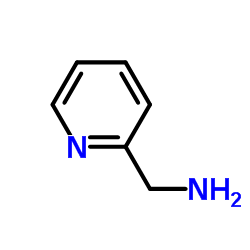
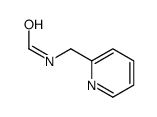

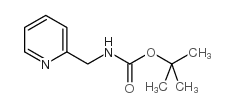

![2-[(二甲氨基)甲基]吡啶结构式](https://image.chemsrc.com/caspic/421/43071-19-8.png)
